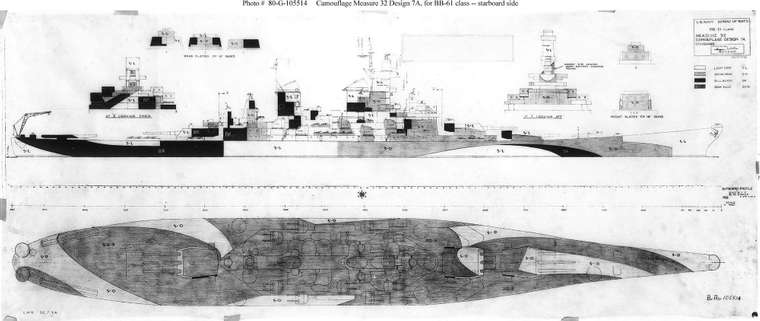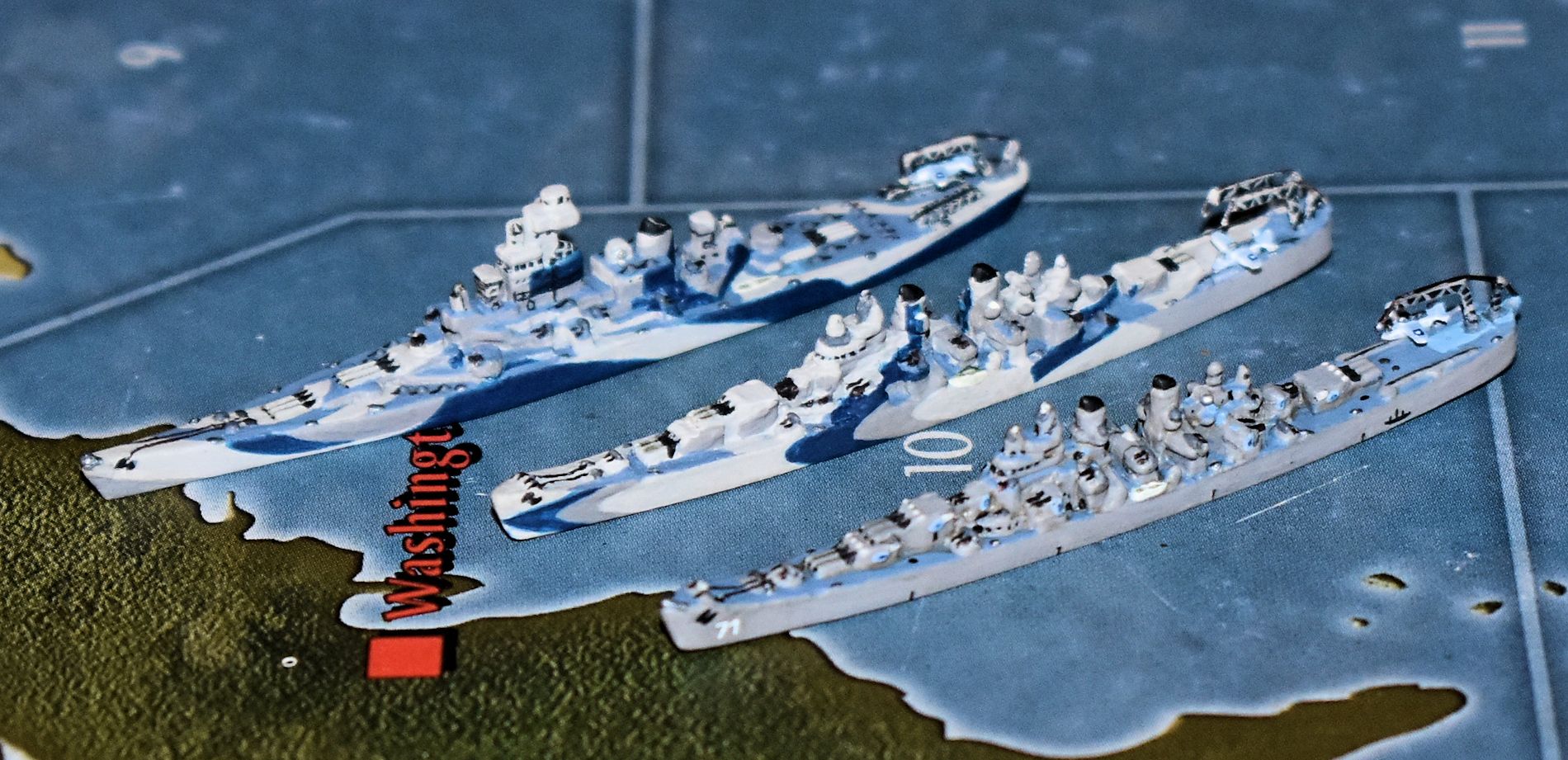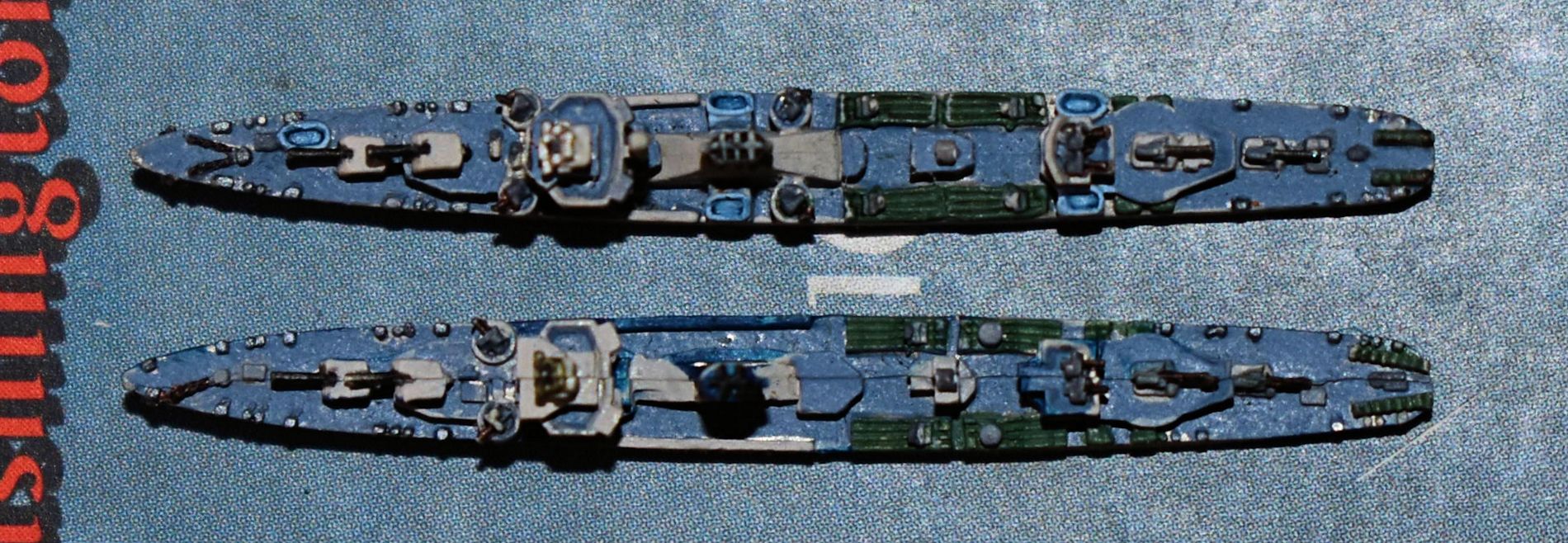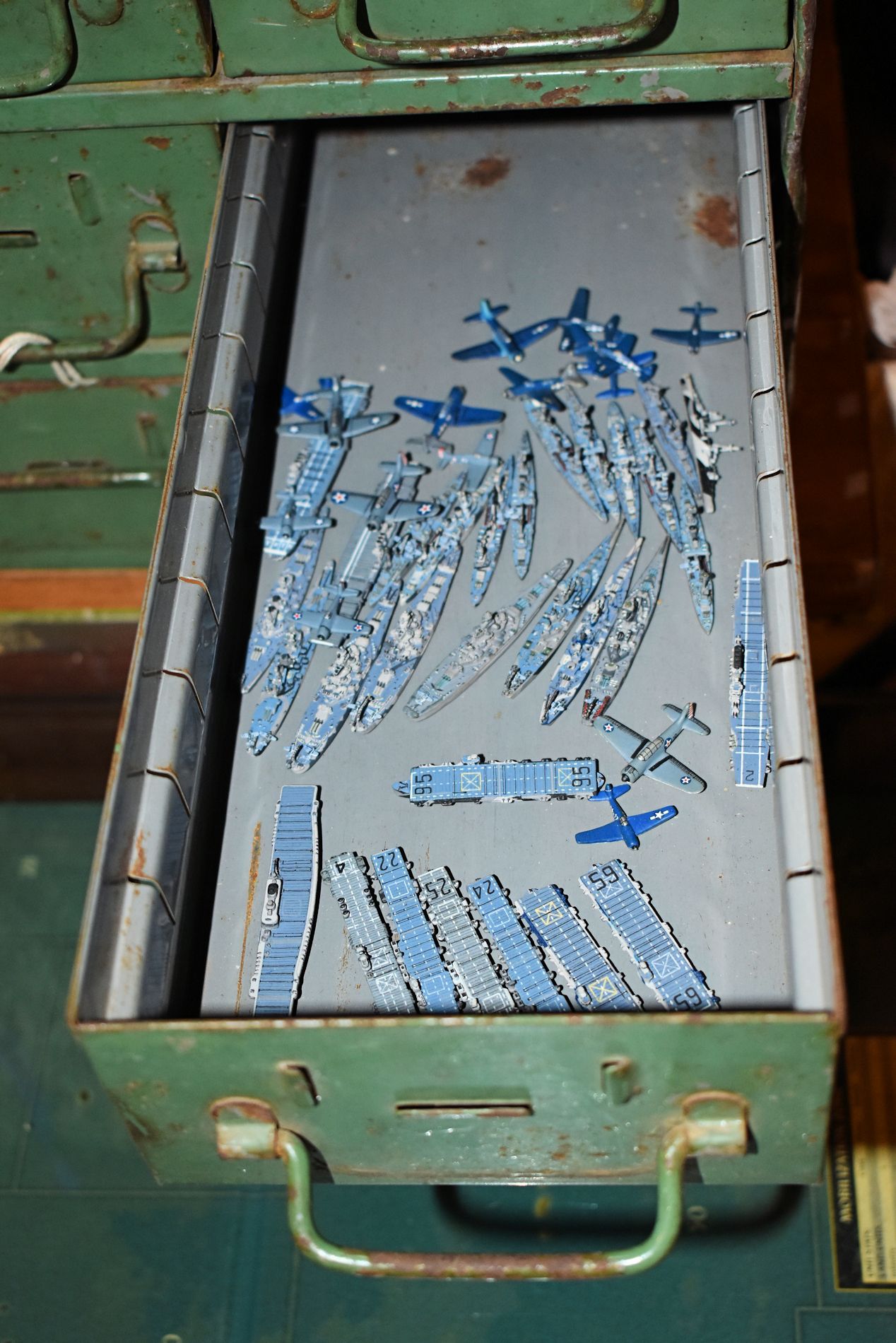The pre-digital printing technique that was originally used in comic books (among other applications) is called halftone printing, or halftoning; raster imaging is its digital equivalent. Roy Lichtenstein once painted a giant comic strip panel titled Whaam!, and I think Andy Warhol was also fond of producing oversized images in which the halftone dotting effect was magnified.
Custom carriers from OOB's and painted pieces
-
Wow! And here I thought I put a lot of detail in my ships. Can’t wait to see these on the Enterprize. Great job Doug.
-
@DMcLaren
Good stuff. The perfect tools for sinking those pretty flat tops.
I’m beginning to understand how this up close photography accents mistakes never seen on the board.
As to the silvering, I noticed on the pic of the nose decal that the paint surface looks dull, one thing I’ve learned about decals is they prefer to lay down on a shiny smooth surface. The irregular surface is trapping air pockets under the film.
I’m personally using Pledge gloss floor finish. Dries fairly quick, levels well without killing surface detail. -
@Mr-Kell - Thank you! I’ve heard of using Pledge on larger scale models but never thought it might work on something smaller. Thanks for the tip- I’m doing that on the next one. And a hearty “Indeed!” on the close up photography. I started photographing FOlewnik’s ships with a better camera and it gave me a little more confidence to push my comfort level. Makes me look forward to doing more Stukas, too.
And thank you to everyone else as well. I have to pass those along to a lot of guys that came before me and gave me the inspiration to try new things to see if they work.
-
I was able to catch up with FOlewnik this past week and get pictures of the latest finished ships of the US Navy- three light carriers and six destroyers. Let’s start with two light carriers of the Independence Class that started as cruiser hulls but were completed as aircraft carriers and reclassified as a “Small Aircraft Carrier” and designated as “CVL”, 15 July 1943, the USS Independence (CVL-22) and the USS Belleau Wood (CVL-24). I have to say I really like these Shapeways prints by Ebard for their detail, and I think FOlewnik does a fine job adding a bit more with pigment.





Next up is the USS Bismarck Sea (CVE-95), from a Casablanca class carrier sculpt from Historical Board Gaming:



Now on to the destroyers from GHQ. I’ve mentioned before that they’re pewter so they’re costlier than plastic pieces, but the detail in them is just great. Here are two Somers class ships, FOlewnik painting them as the USS Warrington (DD-383) wearing Measure 2, and the USS Somers (DD-381) herself in Measure 12:



Below at left is the Sumner class USS Cooper (DD-695) wearing camouflage Measure 32, Design 3d, and on the right is the Fletcher class USS Foote (DD-511) wearing Measure 32/18D:



The last two destroyers for this post are Benham class USS Sterett (DD-407) wearing camouflage Measure 12, and Bagley class USS Bagley (DD-386) painted in Measure 32, Design 1d:


-
Wow ! Those look Great ! Glad they’re protecting Washington from those u-boats : )
-
Excellent work!! I sure wish I could afford something like that!! It is just nice to see on the board… So much diversity.
-
More US Navy by FOlewnik. I forgot to take pictures of the bottom of these ships (where FOlewnik writes the name of each), so the only ones I know for sure are USS Henley (DD-391), USS Lang (DD 399), USS Quincy (CA 71) and the heavily modified USS Iowa (BB-61). I’ll start with the heavily modified USS Iowa. FOlewnik added several AA gun mounts over and above the usual launch catapults, scout aircraft, and recovery cranes. If I recall correctly, the AA guns were cut from a GSC Akagi carrier, but I’ll have to have FOlewnik check in with his comments to confirm that. The camo sheet came from Navsource, but then I noticed this on it’s description: "Drawing prepared by the Bureau of Ships for Camouflage Measure 32, Design 7A intended for battleships of the Iowa class (BB-61 / 66). No ship is known to have worn this scheme. " No known ship, eh? So this is technically the first and I’ll have to have FOlewnik identify which it is.





This HBG sculpt Baltimore class cruiser is the USS Quincy (CA 71). Originally laid down as the St. Paul, she was re-named Quincy on Oct. 16, 1942 in honor of the original cruiser USS Quincy (CA 39) which was sunk by Japanese gunfire during the Battle of Savo Island on Aug. 9, 1942. This sculpt was “cleaner” than the others in that, like a “proof” coin, much more detail was visible in this piece than the others. FOlewnik told me that prior to painting this particular piece, he never noticed there were so many life boats molded into the sculpt.



This one I’m not sure about- a Baltimore class cruiser never wore Measure 33, Design 22D, originally designed for destroyers. But Measure 33, Design 22D WAS modified for use on Atlanta-class antiaircraft cruisers, and was used on the Atlanta class USS San Juan (CL 54, excellent large picture here: http://www.navsource.org/archives/04/054/0405409.jpg) and the Oakland class USS Flint (CL 97).



Here’s the three of them together:

The Benham class USS Lang (DD 399) and the Bagley class USS Henley (DD-391). Very similar layout to each, as seen in the overhead view. The Henley was sunk by Japanese Submarine RO-108 off Finschafen, New Guinea, on Oct. 3, 1943. An account can be read on the Naval History page here: https://www.history.navy.mil/research/histories/ship-histories/danfs/h/henley-ii.html. The Lang had a very active and successful war, being awarded 11 battle stars for World War II service. FOlewnik chose to paint her in Measure 21, Design 1D.






-
FOlewnik’s USS Franklin (CV-13), from the HBG Essex class carrier sculpt. This sculpt, like the USS Quincy above, was “cleaner” than the other Essex carriers we’d bought in that, like a “proof” coin, much more detail was visible in this piece than the others. So to show the extra details, FOlewnik chose to go with the late war Measure 21 camo (i.e. “haze grey”), as the Franklin was in January '45, after repairs from a kamikaze attack suffered the previous October. It may be hard to tell from the pictures, but several different shades of grey were used to add depth and highlights to the fine details in the sculpt. Of all the Essex class carriers he’s done so far, I think this is FOlewnik’s best. He even did the hull numbers by hand.






-
Imperious Leader '17 '16 '15 Organizer '14 Customizer '13 '12 '11 '10last edited by Aug 7, 2020, 5:26 PM
Do you have a wide shot of alot of these ships in a game situation. Id like to see how you did Germany/Italy/Japan. Every pic is US ordinance
-
We started with the Japanese navy pieces for this post. Perhaps you may wish to start from page 1 and see them. We have not yet gotten to Germany or Italy yet, with the small exception of a few Luftwaffe pieces shown earlier.
-
More ships of the US Navy by FOlewnik. Starting with the light cruiser USS Omaha (CL-4), the USS Farragut (DD-348) looking sea-worn, and the heavy cruiser USS Saint Paul (CA 73). Omaha and St Paul are HBG sculpts and the Farragut is GHQ.


Three more US DD’s but I lost my notes and don’t recall which ships these are. Their camouflage patterns are meant to go with those of other pieces to form task forces of similar camouflage measures. All GHQ pewter pieces here:


The most recent finishes together:


Four more HBG sculpt Essex class carriers are in progress. Although these sculpts have a lot of detail, their decks are usually not 100% flat and must be leveled before magnets are added and the piece is painted. Here we see two in progress with the putty applied and mostly sanded level. In the second picture, you can see the amount of detail that goes into the carrier deck at the start. These lines are all hand painted (of course!) and the rest of the deck is painted over it so that these lines fade into the background.


A look at the storage drawer filling up with carriers, battleships, cruisers, and Naval Air (light cruisers and DD’s were elsewhere):

-
Thank you for the positive feedback! I forgot to say that in the previous post, and it’s very important that I do. It’s very encouraging and motivating to get good feedback, and we certainly appreciate it. The above mentioned four Essex class carriers are complete, a long with several other ships of the US Navy, so its time to update the thread. Just ships by FOlewnik in this post. More aircraft are almost done but I haven’t put magnets in them yet (so not really done), so no aircraft pictures this post.
We’ll start with the two “odd men out” of the HBG sculpt Baltimore Class Heavy Cruisers. Why “odd men out”? Because in the below picture we have on the left, the USS Unnamed Baltimore Class Cruiser Wearing Measure 31a, Design 9C, and on the right is the USS Columbus (CA 74), which wasn’t commissioned until June 8, 1945. The cruiser with the long name is wearing a design that was never used, but was taken from a period design found at https://www.wikiwand.com/en/World_War_II_US_Navy_dazzle_camouflage_measures_31,_32_and_33:_cruisers. The USS Columbus is wearing a Measure 12 Modified designed by FOlewnik to match the pieces we’ll be using for the US Atlantic fleet. These will get aircraft added, but at the time of the photographs the decals on the wings of the aircraft were drying.




Next up are some metal destroyers from GHQ. Below on the left, the very brave USS Johnston (DD-557) painted in MS-3_/6D as it looked when it was “Sunk by Japanese Warships off Samar October 25 1944,” and next to it is USS Van Valkenburgh (DD-656) painted in camouflage Measure 31, Design 9d. All Wartime photos taken from Navsource.org, a great resource for US Navy history buffs.



Below, the real USS Johnston shortly before her final battle, and the official design sheet:


A great wartime picture of the USS Van Valkenburgh, which is the same on both sides:

Now on to these two. From GHQ, USS The Sullivans (DD-537) painted in Measure 1, and the HBG sculpt light cruiser USS Marblehead (CL-12) who always wore Measure 2 throughout the war. If I can get FOlewnik to put the Shamrock on the first stack of The Sullivans when he puts the scout aircraft on the Marblehead, as seen in the below wartime photograph, I’ll come back and edit the post.





The post previous to this post showed four Essex Class sculpts from HBG getting prepped and started with a base coat. Those are now completed and I had too much fun playing with them and the aircraft (that are complete so far) while I was taking photographs. I’m pretty sure I didn’t make any wooshing sea or aircraft noises or FOlewnik would have laughed at me. I was tempted though, and here’s why:



Above we have the first of the Long Hull Essex Class, USS Ticonderoga (CV-14) on the left looking as she did after her April 1945 refit from suffering a Kamikaze Attack on January 21, 1945, and USS Bunker Hill (CV-17) on the right. The Bunker Hill is wearing Measure 33, Design 6A, of which Navsource says, “Her port side camouflage pattern was the most intricate design applied to any carrier.” One glance can confirm that!

The final two Essex Class carriers are the USS Essex (CV-9) herself, and the USS Bennington (CV-20). The Essex is wearing a unique pattern, Measure 32v6, Design 10D, adapted from a destroyer pattern specifically for the long hulled Essex. The Bennington is painted in Measure 32, Design 17A.





Finally, some group pictures just for fun:




Thank you for checking out the post! If you liked it, please click the little heart. I’m trying to figure out why our post is only rated with a 2 when it seems it should be a bit higher if the other likes are any indication.







